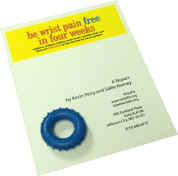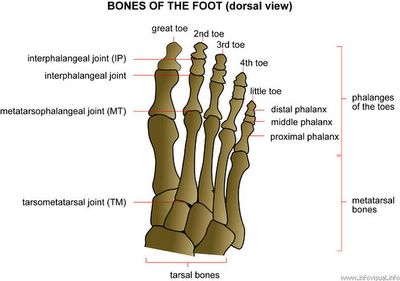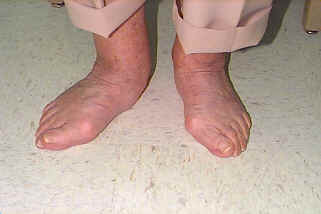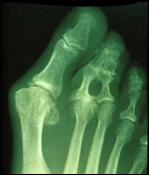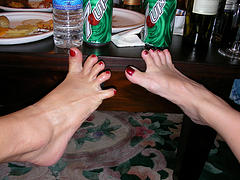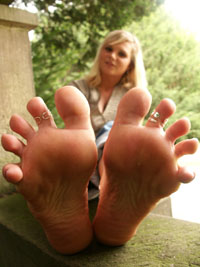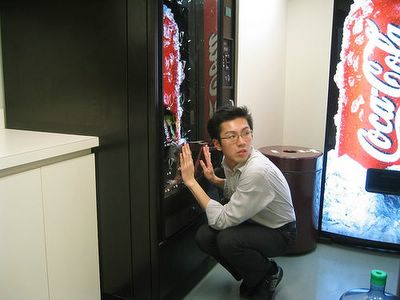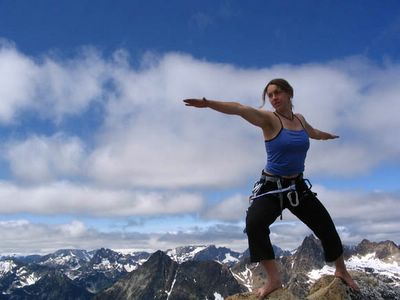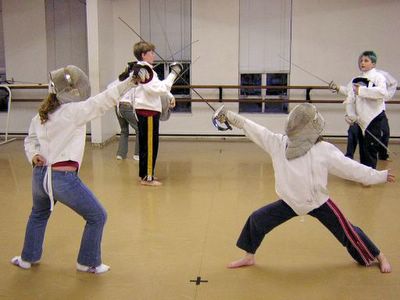Architectural Intentions
He was on campus at the University of Wisconsin. He wanted to know what she was majoring in.
Eventually, she admitted "we don't have Architecture here."
His come-back was priceless. "I know. I've seen the buildings."
The interviewer was radio host and comedian Michael Feldman, the star of the Wisconsin Public Radio show Whad' Ya Know?.
He couldn't stop there. He asked, "Do you lean toward a particular style of architecture?"
It seems to me that "lean" and "architecture" don't belong in the same sentence. (Think of the leaning tower of Pisa.) And it's all because of gravity.

I lean toward a particular styel of yoga. The style I prefer is Anusara yoga, for many reasons. At least one of those reasons is Anusara has "architectural intentions," too.
Anusara yoga emphasizes Attitude, Alignment and Action, the "three A's" of Anusara.
When you line up your major body segments with the flow of gravity (like an architect), you become structurally stronger. Ultimately, you can perform your poses with more ease when gravity supports you, rather than dragging you down.
Here's a question: When others see the poses you're building, do they see any evidence of architectural design? Do they see alignment?
Try this. Look at your virabhadrasana 2 pose in the mirror. That's warrior 2 pose. Is your spine vertically aligned? Or, do you lean like the tower of Pisa toward your front hand?

If you have architectural intentions (and you should), you've got to figure out how to true up your torso with plumb.
That architectural wonder, the Leaning Tower of Pisa, should give you a clue about getting on track.
The foundation makes all the difference.
Before you even start warrior 2 pose, you take your feet wide apart and turn them. Assuming you're going to go right first, you turn your left foot in a bit, and turn your whole right leg out.
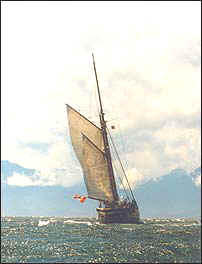
Most of my students, when they turn their feet in this way, immediately and often unknowingly, drop their right hips. Now the pelvis is no longer level.
Because the foundation isn't level, the spine lists like the mast on a tall ship in high seas.
Level your pelvis--and keep it level--as your come into the pose and the tower of your vertebrae won't lean at all.
That's alignment. And that's good.
Don't just read about it. Get up. Experience it. Experience yoga!
Kevin Perry
www.ExperienceYoga.org
p.s., If you look at a map of Italy, you'll see it's shaped like a foot and leg. Rome is located right about where the knee cap should be. And Pisa is on the upper thigh.
The Sanskrit word for foot or leg is pada. It's one of the most frequently used word roots in all of the Sanskrit names of yoga poses.
Get a leg up on your Sanskrit. Join us for the Experience Sanskrit workshop coming up next in Columbia, MO at alleyCat yoga. Click on http://alleycatyoga.com/alleyCat/wkshps.htm#sanskrit for more information.
We also have dates set for Dallas, TX and Annapolis, MD. Click on
http://store.yahoo.com/yhst-13837176072520/index.html to register.
p.p.s., "Anusara" literally means to step into the flow of Grace. When you align yourself with the direction of flow in the universe, there's more ease. Find out more about Anusara yoga at http://anusara.com/.
p.p.p.s., Speaking of flow..."the flow's the thing." That's right. It's the flow that makes the difference when you practice the ancient cleansing practice of jala neti. Warm saline, a neti pot, and flow are all you need to get your upper respiratory system tuned up and healthy as can be. Find out more at http://experienceyoga.blogspot.com/2005/01/experience-neti-flow.html.
Copyright 2005. All rights reserved, Mo Yoga LLC.
